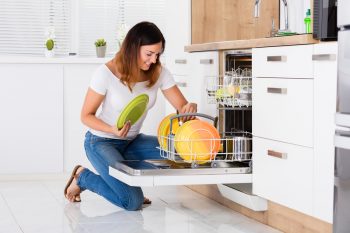
Burns are a common injury, particularly in the kitchen where sources of heat are abundant. One such source is the oven, which can cause severe burns if not handled correctly. The severity of an oven burn can range from a first-degree burn to a third-degree burn, depending on a variety of factors such as the temperature of the oven and the duration of contact with the hot surface. In this comprehensive guide, we will explore the different degrees of oven burns, how to treat them, and how to prevent them.
The degree of an oven burn can range from a first-degree burn, which affects only the outer layer of the skin, to a third-degree burn, which affects the deep layers of the skin. The severity depends on factors such as the temperature of the oven and the duration of contact with the hot surface. First-degree burns cause pain and redness, second-degree burns cause blistering and can be more serious, while third-degree burns can cause white or blackened skin and numbness.
Understanding Oven Burn Degrees
The degree of an oven burn refers to the severity of the burn and how deeply it has affected the skin. Here’s a breakdown of the different burn degrees:
First-Degree Burns
First-degree burns affect only the outer layer of the skin, causing pain, redness, and minor swelling. They are generally mild and can be treated at home. If you accidentally touch a hot oven rack or door, you’re likely to get a first-degree burn.
Second-Degree Burns
Second-degree burns affect both the outer and underlying layers of the skin. They cause pain, redness, swelling, and blistering. Second-degree burns can range from minor to serious and can be caused by touching a hot stove or oven for a more extended period.
Third-Degree Burns
Third-degree burns affect the deep layers of the skin and are more severe than second-degree burns. They cause white or blackened, burned skin and may be numb. Third-degree burns can occur when exposure to a heat source (such as an oven) lasts for more than a few seconds.
The Role of Oven Temperature in Burns
The average temperature range of a home oven varies depending on the desired cooking method and the type of oven. Generally, home ovens have a temperature range of 170-550°F (77-288°C). Higher temperatures and longer exposure times generally result in more severe burns. However, individual factors and the type of heat source can also play a significant role in determining the severity of a burn.
Treating Oven Burns: First Aid Steps
If you experience an oven burn, it’s essential to take immediate steps to treat the burn:
- Cool the burn under cool or lukewarm running water.
- Remove any jewelry or tight clothing near the burned area.
- Avoid breaking any blisters or applying butter or ointments.
- Cover the burn loosely with a sterile, nonstick bandage or a clean cloth.
- Elevate the burned area, if possible.
- Monitor for signs of shock, such as cool, clammy skin, weak pulse, and shallow breathing.
Long-Term Effects of Oven Burns
The long-term effects of oven burns depend on the degree of the burn. While first-degree burns usually do not cause permanent damage, second-degree burns can lead to changes in skin tone and scarring. Third-degree burns can cause various long-term effects, including hypertrophic scarring, mental health disorders, chronic persistent pain, and an increased risk of diseases like cancer.
Preventing Oven Burns
Preventing oven burns is as simple as following a few safety tips. Always use oven mitts or potholders when handling hot cookware. Keep your cooking area free of flammable materials. Turn pot handles toward the back of the stove. And always supervise children in the kitchen.
In conclusion, oven burns are a common but preventable injury. Understanding the different degrees of burns, knowing how to treat them, and taking precautions can help you stay safe in the kitchen.
Frequently Asked Questions
What should I do if I get a third-degree burn from an oven?
Third-degree burns are severe and require immediate medical attention. Do not attempt to treat a third-degree burn at home. Instead, call your local emergency number or go to the nearest emergency room.
Can I use ice to cool a burn?
No, you should not use ice on a burn. Ice can cause frostbite and further damage the skin. Instead, cool the burn under cool or lukewarm running water for about 10-20 minutes.
What kind of ointments can I use on a burn?
Over-the-counter ointments like aloe vera or burn creams can be used for first-degree burns. However, for second-degree burns, it’s best to seek medical advice before applying any ointment. Never apply ointments or creams on third-degree burns.
How long does it take for an oven burn to heal?
The healing time for an oven burn depends on the degree of the burn. First-degree burns usually heal within 7 to 10 days. Second-degree burns can take 2 to 3 weeks or longer to heal. Third-degree burns require medical treatment and may take months or even years to heal completely.
Can I prevent scarring from an oven burn?
Yes, proper care of the burn can help minimize scarring. This includes keeping the area clean, avoiding sun exposure, and not picking at the burn as it heals. If a burn is severe or covers a large area, seek medical attention as they can provide treatments to help minimize scarring.












